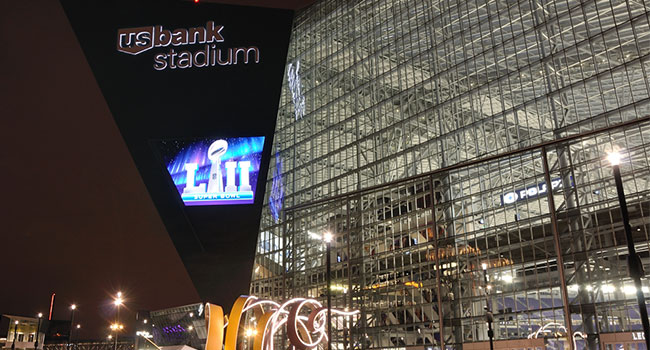
Behind the Scenes: Super Bowl Security
In just a few weeks, the Super Bowl will kick off after two years of planning the safety and security of the event.
- By Sydny Shepard
- Jan 19, 2018
The Super Bowl is arguably the largest sporting event in the United States. Thousands of people from all over the country will descend to the U.S. Bank Stadium in Minneapolis, Minnesota to watch two professional football teams duel it out to become the 52nd Super Bowl champion.
The size and popularity of the event justifies the amount of work the FBI, Minneapolis Police Department (MPD) and other local agencies put into keeping the game safe and secure for attendees, athletes, coaching staffs and the employees of the facilities. The agencies start planning the security of the event nearly two years before game day, according to a press release from the FBI.
MPD is the lead agency for security at this year's Super Bowl, according to the FBI, but they are being supported by dozens of local police departments, public safety organizations, federal agencies and multiple components of the Department of Homeland Security.
“An event like this is about planning, about preparation, and about partnerships,” said Rick Thornton, special agent in charge of the FBI’s Minneapolis Division in the press release. “Each organization brings its unique abilities to the table, but it requires tremendous teamwork and cooperation to pull everything together into a unified whole.”
With just a little over two weeks to go before the Big Game, agencies are meeting in Minneapolis to go over each and every scenario that might happen during the event and even at some of the festivities beforehand. The agencies are asked to simulate their responses to a variety of scenarios, including the weather, as the temperature drops into the teens in Minnesota.
In order to keep attendees and security personnel out of the bitter cold, fans attending the game will be pre-screened at indoor locations, such as the Mall of America, so they won't have to wait outside the stadium.
The security of the stadium itself, proved to be a challenge as it is located in the heart of downtown. The agencies established a secure perimeter around the U.S. Bank Stadium and on game day, they will strictly enforce road closures and place barriers to ensure vehicles do not drive in pedestrian-only areas.
The FBI's main responsibilities at the even include taking the lead on any kind of terrorist, cyber or major crime incident, and providing intelligence, from both a national and international perspective about bad actors who might seek to disrupt Super Bowl activities.
“We have planned for this to ensure that nothing happens,” assistant special agent in charge of the FBI’s Minneapolis Division, Joe Rivers said. “But if something does happen, some kind of mass casualty incident or terrorism event, then there is a huge shift built into the program to continue to support the event but to transition to crisis response and investigation.”
The FBI has also taken the responsibility for credentialing thousands of public safety officers and volunteers who will need varying levels of access to Super Bowl venues. They are performing name and record checks for nearly 30,000 people.
“The goal is to have a safe event,” Rivers said. “We want all the fans in town to see the game and enjoy the events and festivities without ever having to know about all the time and effort and energy that went into getting us to this stage.”
About the Author
Sydny Shepard is the Executive Editor of Campus Security & Life Safety.